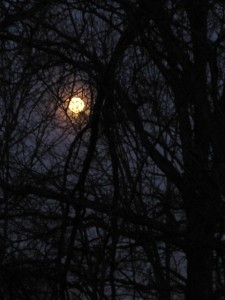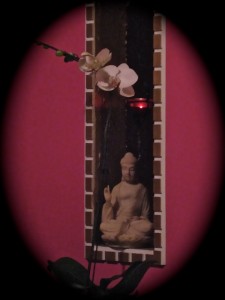A solution is reached when a problem is solved. Problems dissolve when a solvent is applied. Solvents break down barriers, divisions, and oppositions that result in a sense of unity and wholeness. This is known as resolution, or “re-solution” for the purposes of this blog.
The psyche is composed of many opposing parts, each with their separate points of view, separate needs, and separate desires. This is why, on some level, we are all bipolar beings, beings charged with the task of re-solving our polarities into a unified whole, what Jung called individuation.

Humans often ingest substances to re-solve the rigidities and polarities within the self that block unified action and fulfillment. A glass of wine might prove to be the dis-solving agent to loosen rigidity, relieve stress, quiet the mind, unleash vision, or allow us to open to the body and creativity, as we seek to transcend the wear and tear of daily life or the stilted energy of our deeply fragmented selves.
Wine is the highly celebrated fruit of Dionysus, the god of creativity and spontaneity. Wine is the transforming agent at the heart of the Christian mass. Wine is the agent that dissolves differences and takes us beyond our humanness. With it we commune with the gods. Of course, when we dry out, when the potion has run its course, we return to our humanness.
At the end of these journeys, however, the rigidities and polarities of our everyday lives return with a bad mood—a sobering moment to say the least. But, spiritual beings that we are, we long for the resolving qualities of dissolution again, a solution to solve our boredom and limitations, a solution to take us out—out of ourselves, beyond ourselves, or to feel fully free and whole within ourselves. We may find ourselves dependent on solutions, liquid or herbal, to solve our dilemmas.

The shamans of don Juan’s lineage recognized the power of these solvents. They realized that behind the solvents were entities that willingly catered to the desires of humans. The Ancient Shamans called these inorganic beings Allies, and they reveled in the belief that they could control these entities, who would reveal secrets like the fountain of youth to them. It was the contention of the New Seers of don Juan’s lineage, however, that this was the fatal flaw and downfall of those Ancient Shamans. The New Seers contended that the Ancients were duped into obtaining extraordinary powers in exchange for their attachment to these allies. In the shamanic world, this is the equivalent of addiction.
In the world of everyday life, we ingest all kinds of substances as we seek resolution to our problems, as we seek to achieve fulfillment and to transcend our human limitations. By our very nature we are consumers. We consume to solve and resolve our lives. From a shamanic point of view, this is a recipe for bondage, dependence upon substances that themselves consume the lion’s share of our lives.
The urge to seek resolution, wholeness, and transcendence is utterly healthy—it’s why we are here—and although it may be necessary to consume and engage the slippery slope of the inorganic world of allies, knowingly or unknowingly, there is a better solution: Engaging INTENT.
The shamans discovered Intent as an energetic wave that permeates the universe. We naturally engage intent to define our world. In our time, the mind has intervened to rationally limit our human potential. We engage intent largely to reinforce a known world and a known self. However, intent has the capability to open us up to the full realization of our true human potential, if we allow it to do so.

The mind, however, makes us nonbelievers, too shy to call out to intent, too impatient to allow it to unfold, too doubtful and judgmental to accept its path. In my experience, when we set an intent, simply by repeatedly intending it, it works its magic in the events, synchronicities, and encounters of our lives. Eventually, our intent is realized, though perhaps not as we might have expected.
In actuality, we constantly engage intent to create and reinforce the world we live in. We have become so entrenched in rigid definitions of a world of solid objects and unchanging self that we don’t believe anything else is possible and thus we limit our access to a greater world and greater solutions. We get caught in addictive behaviors as we turn to consuming solutions, seeking to gain temporary entrée into our hidden resources. Our access to intent and higher resolution, however, is limited by what we staunchly believe, what the mind rationally insists upon, and what the judgments of others reinforce.
We all have to encounter the inorganic world in our lives, we must all become consumers of one sort or another, but that world always exacts a toll in return for its gifts. Even as it asks us, “Are you really going to go down that path?” it entices us to do so, for its own energetic purposes.
The Ancient Shamans thought they could handle the power of the inorganic world, but the New Seers discovered that it was far more efficient to shift away from extraordinary powers in the human form and eternal life on earth to a new kind of freedom: no contracts, no attachments that could exact a toll on their energy, but instead total freedom to humbly continue without any special powers, other than that of engaging the pure power of intent on their continuing journeys in infinity.
When Carlos Castaneda got caught in the inorganic world of the Allies, don Juan, because he had refused to enter such worlds, didn’t know what to do. He turned to Carol Tiggs—another apprentice in Carlos’s group who had fully explored that world—and asked her to lead a mission to rescue Carlos. In this example, we are privy to don Juan’s process as he refused to break with his intent and be pulled into something that he knew was potentially harmful.

Once we set our intent, even if we forget that we have done so, the energetics of it are set in motion. This is not a rational process; it’s an energetic process. It defies logic, it defies rationality, it defies the belief system of the mind. It is not connected to effort, will, goodness or badness—the constructs of change ordained by the mind. It does not involve hidden contracts to arrive at its solution. It’s part of our inheritance, our natural endowment, if we can allow ourselves to engage this most natural solution, with unbending intent.
It is truly an energy thing! Just do it, as the shamans do, and literally call it to your changing self.
INTENT!!!
Chuck







